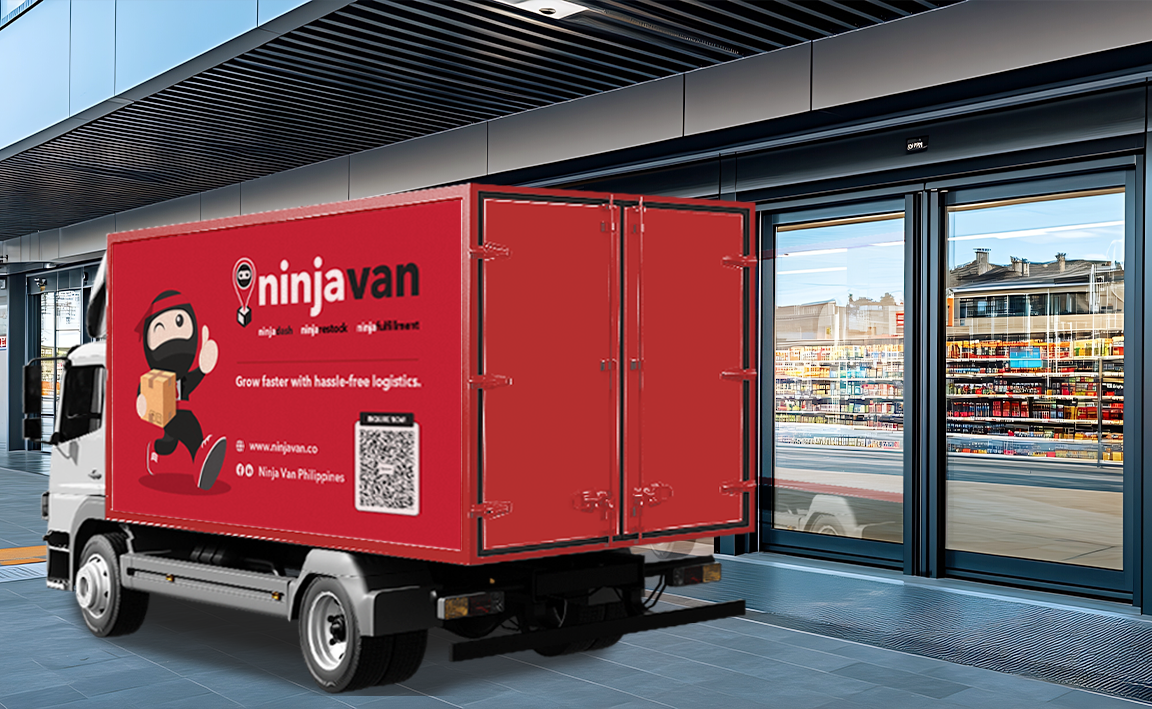Stockouts and Replenishment: How Filipino Businesses Can Prevent Inventory Gaps
Prevent costly stockouts with strategic planning and effective logistics. Learn replenishment strategies tailored for growing Filipino businesses.
.webp)
For many Filipino businesses in 2025, a seemingly minor issue, such as running out of stock, can trigger a devastating chain reaction. It's more than just empty shelves. When you're out of an item, it means lost revenue, poor customer experiences, and stalled growth. In high-demand sectors like retail, food, and e-commerce, where instant fulfillment is the norm, frequent stockouts can quickly erode customer trust.
To avoid these critical pitfalls, businesses need to master replenishment. It’s not just about restocking shelves. It’s about being smart and proactive, getting ahead of what your customers will want with careful planning. This article explores the root causes and costs of stockouts, offering actionable and localized strategies for stockout prevention through smarter logistics and planning.
What is a Stockout? Understanding the Real Cost of Empty Shelves
A stockout happens when customer demand exceeds your available inventory. Unlike a planned backorder (where customers are informed of a delay and still choose to proceed with the purchase), a stockout typically results in a lost sale and, often, a lost customer.
In day-to-day operations, stockouts show up in ways that directly impact your business:
- A restaurant runs low on a key ingredient, forcing last-minute menu changes during peak service.
- An online store’s bestselling item becomes unavailable due to insufficient inventory.
- A convenience store misses out on its weekend rush because deliveries were delayed.
While stockouts may appear to be a one-time mishap, they often indicate deeper operational weaknesses, such as inaccurate forecasting, slow replenishment, or inefficient logistics. If left unchecked, the consequences can lead to more than missed revenue; expect brand damage, lower customer loyalty, and increased operational pressure.
Think of a stockout not just as a shortage, but as a warning sign. Understanding the “how” and “why” behind them is the first step toward building a more responsive inventory system—one that keeps you ready for demand, rather than scrambling to catch up.
The Real Cost of Stockouts for Filipino Businesses

Stockouts can cause lasting damage that affects both your bottom line and your business reputation. For Filipino SMEs, especially those in competitive sectors like retail, food service, and e-commerce, even a single inventory gap can set off a domino effect of issues:
1. Loss of sales and customer churn
When a product isn’t available, customers don’t wait around; they simply move on. In today’s age of instant alternatives, a stockout sends potential buyers straight to your competitors. Over time, frequent stockouts erode customer confidence and discourage repeat purchases, regardless of the high quality of your products.
2. Strained supplier and customer relationships
When you're hurrying to restock after running out of inventory, it's a huge headache. You're suddenly putting a lot of pressure on your suppliers, and you might even end up paying more just to get those rush orders fulfilled. On the customer side, recurring stock issues severely hurt trust, leading to poor reviews, order cancellations, and even long-term brand damage.
3. Increased operational costs
Emergency restocking often means paying a premium for expedited deliveries or resorting to sub-optimal logistics solutions just to catch up. Meanwhile, your customer support team can become overwhelmed with inquiries and complaints. That eats up a ton of their time and effort, costs that are avoidable if you'd just had enough stock in the first place.
4. Damaged brand reputation and skewed demand forecasting
Stockouts make your brand appear unreliable. Worse yet, they create gaps in sales data, undermining the accuracy of your future planning. This poor data leads to inaccurate forecasts, perpetuating a cycle of inefficiency.
Understanding these substantial risks is the first step toward implementing proactive strategies for reliable and cost-efficient inventory control.
Why Stockouts Happen (And How to Spot the Warning Signs)
Stockouts usually happen when a business's planning or operations fail to keep pace with actual demand. The good news is that these underlying causes are often identifiable—and, more importantly, fixable
Common Causes:
1. Inaccurate demand forecasting
Promotional events, payday weekends, and even public holidays in the Philippines can cause rapid and significant spikes in demand. If you're just looking at last year's sales without thinking about these upcoming surges and how your local customers behave, you're guaranteeing you'll run out of inventory when people want it most.
2. Manual restocking and spreadsheet dependence
While updating spreadsheets or manually checking inventory might seem manageable for small operations, this approach quickly becomes problematic as a business grows. These manual systems are highly prone to human error, lack real-time visibility into inventory levels, and make it too easy to miss dwindling stock. Before you know it, you have unexpected stockouts.
3. Supply chain or fulfillment delays
Even if your plans are solid, delivery delays can disrupt your inventory. Common issues in the Philippines, such as vendor production delays, port congestion, or logistical challenges, can all lead to gaps precisely when shelves need to be full.
4. No safety stock or reorder thresholds
Operating without adequate safety stock—an emergency buffer—or clearly defined reorder points leaves your business highly vulnerable. Even minor, unforeseen delays or sudden rises in demand can quickly result in costly stockouts.
Early red flags
Watch for these early warning signs that your inventory system might be faltering:
- Sudden spikes in refunds or cancellations
- Increased cart abandonment rates due to item unavailability
- Discrepancies between your system's inventory records and actual physical stock
- A rise in customer complaints about missing products
Spotting these indicators early allows you to correct course promptly, preventing minor inventory gaps from escalating into costly problems.
5 Replenishment Strategies That Actually Work

Effective replenishment ensures you remain adequately stocked without the pitfalls of overstocking. Here are practical, actionable strategies designed to work for businesses of all sizes, even those without highly complex inventory systems.
1. Reorder point model
Implement a reorder point model, where new stock is ordered as soon as inventory levels fall below a predefined level. This threshold is calculated based on your average daily usage and the lead time required by your supplier. Simple yet scalable, this method is particularly ideal for high-turnover items.
2. Periodic review vs. perpetual tracking
Consider two primary approaches to monitoring your inventory:
- Periodic review: This involves checking stock levels at regular intervals (ex., weekly or bi-weekly). While easier to manage manually, it carries the risk of inventory gaps occurring between reviews.
- Perpetual tracking: This method requires digital tools to continuously update inventory records with every sale and incoming delivery, providing real-time data. This offers superior accuracy and is great for faster-moving businesses that need immediate insights.
3. Demand buffers and safety stock
Always maintain a backup inventory buffer. Whether preparing for promotional periods or anticipating potential supplier delays, holding safety stock ensures you’re not caught off guard when demand spikes unexpectedly or supply chain disruptions occur.
4. Inventory forecasting tools
While starting with basic tools like Excel is perfectly acceptable for initial forecasting, aim to graduate to more robust inventory management software (IMS) or warehouse management system (WMS) integrations as your business grows. Even basic digital tools can help visualize trends, analyze past performance, and support better, more precise ordering and timing.
5. Automation
Embrace automation to reduce human error and streamline your reordering process. Implementing tools such as barcode scanners, automated stock alerts, and mobile inventory management apps can provide real-time accuracy and efficiency. Even partial automation can yield noticeable improvements in managing your stock levels.
This is where a reliable logistics partner can make a big difference. From faster fulfillment cycles to cargo express delivery for urgent stock movements, Ninja Van supports your replenishment strategy with speed, real-time tracking, and nationwide reach, ensuring you’re always one step ahead of the next order.
When It’s Time to Partner with Logistics Experts
As your business grows, your inventory systems must evolve with it. While manual logs and DIY restocking might suffice in the early stages, they inevitably create bottlenecks that hinder growth and efficiency.
Here are the clear signs you've outgrown manual inventory processes and need to consider a more robust system:
- Missed or delayed orders despite “in stock” claims: If your system says you have an item, but customers aren't getting it on time (or at all), your inventory data is unreliable.
- Constantly updating spreadsheets or manually chasing stock: Spending excessive time on data entry or physically searching for products indicates a drain on productivity.
- Repeated emergency restocks and costly express shipments: Frequent last-minute orders and paying extra for expedited deliveries are direct results of poor inventory visibility and planning.
- Struggling to coordinate across multiple warehouses or stores: Managing stock across various locations becomes chaotic and error-prone without a centralized, automated system.
Why a logistics partner makes all the difference
Partnering with a logistics expert transforms your approach from reactive restocking to proactive and predictive planning. This strategic shift allows you to maintain optimal stock levels, ensure faster deliveries, and improve cash flow—all while substantially reducing operational pressure on your internal teams.
How tech-enabled logistics drives smarter restocking
Modern logistics providers, such as Ninja Van, utilize technology to integrate real-time tracking with data insights, resulting in optimized and intelligent restocking strategies. They can help you:
- Track stock movement in real time. Gain immediate visibility into where your inventory is at all times.
- Balance inventory across multiple branches. Optimize stock distribution to meet localized demand without overstocking.
- Predict restocking needs accurately using sales and delivery data. Utilize historical and current data to forecast future demand, ensuring you're always prepared.
With Ninja Restock, you can streamline store-to-store, warehouse-to-warehouse, or warehouse-to-store deliveries, executing replenishment runs without the need to build and manage your own delivery fleet.
Meet Ninja Restock: Smarter, Simpler Inventory Control

Ninja Van’s Ninja Restock service is built to make inventory replenishment fast, flexible, and affordable for growing businesses. It simplifies your restocking process by offering:
- Smaller load requirements
- Co-loaded shipments per route
- Multiple drop-offs with fewer Purchase Orders (POs)
- Fixed, transparent pricing
- Nationwide reach
- Easy integration
By simplifying every aspect of restocking, Ninja Restock helps you stay ahead of demand effectively, all without overstretching your team or budget.
Stay Stocked, Stay Ahead
Stockouts don’t have to be part of your growth story. With better data, smarter planning, and the right logistics partner, you can avoid costly inventory gaps and build a brand customers truly trust.
Replenishment is more than just filling shelves; it’s a strategic advantage. Solutions like Ninja Restock and Ninja Dash are designed to streamline your entire logistics operation, from precise inventory control to efficient last-mile delivery.
Ready to discover smarter ways to grow your business? Visit today and follow us on Facebook, Instagram, and TikTok for expert tips, updates, and business insights.

